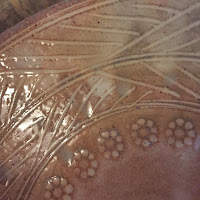Hagi Yaki (萩焼) is a type of Japanese pottery traditionally originated from the town of Hagi, Yamaguchi, in the former Nagato Province. In the period of Edo, The Mori Clan became daimyōs of Choshu Domain and they built Hagi Castle at the foot of Mt. Shizuki in 1608. Since then, Hagi developed as the political center of Choshu for over 250 years.
The Mori clan (毛利氏 Mōri-shi) was a samurai clan. Hagi potteries were a part of tea ceremonies for the samurai clan of Mori, dating from 1604 when two Korean potters were brought to Hagi by Lord Mori Teremuto. The local feudal lord of Hagi area, had appointed potters in a castle town of Matsumoto to create Hagi wares for his personal tea ceremonies. Potters began to run their own independent businesses after the Meiji Restoration. The tradition of tea ceremonies and tea houses continue today.
The beauty of Hagi Yaki comes from not only its earthy colors but also for the glaze. The translucent beige glaze is draw out the natural, deep colors of the clay. Over time, a Hagi Yaki user might notice the color of the glaze getting darker. This is naturally as slightly porous surface absorbs the tea residues, maturing over time. I own one in my house.






No comments:
Post a Comment